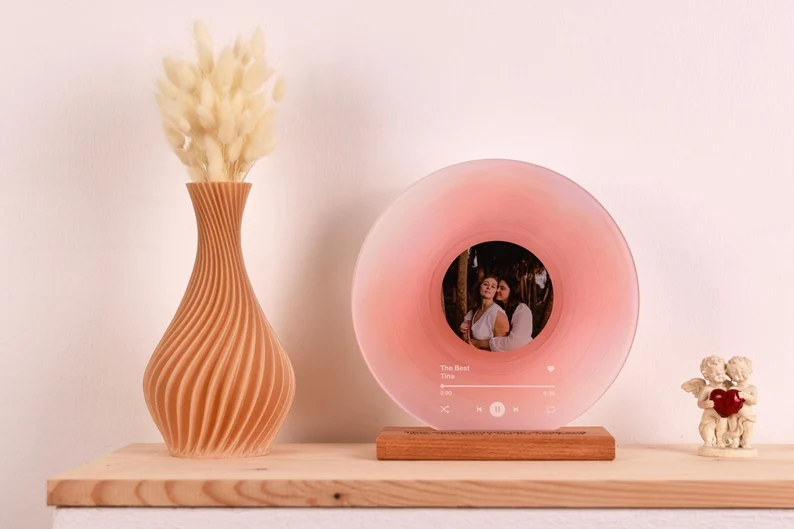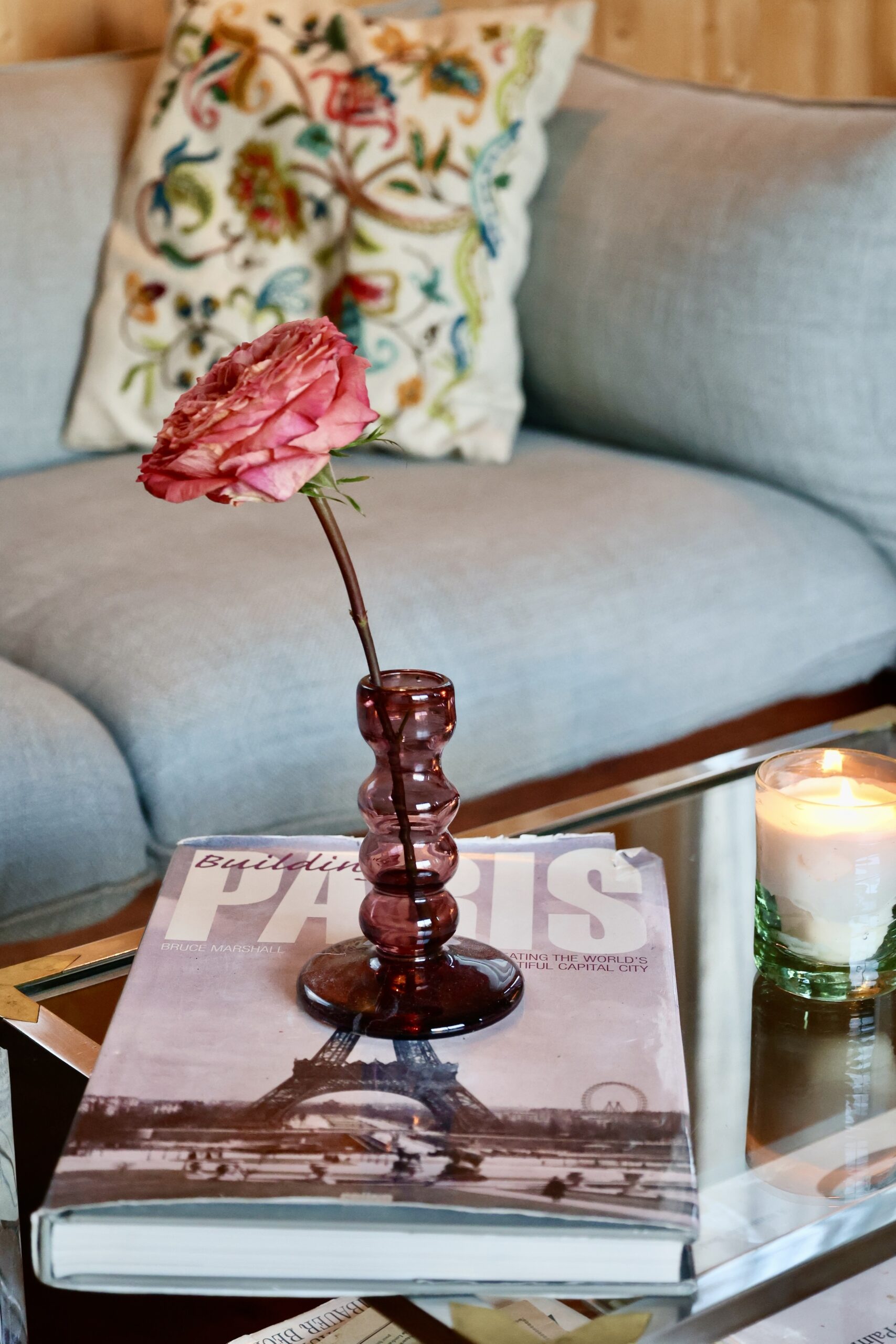Can you summon — in your mind’s eye — a moment when life felt beautiful? It can be real or imagined; a memory or a dream. Whatever you’re picturing, take a moment to revel in it. Then when you’re ready, come back and tell me: What did the lighting look like in this reverie? It’s an odd question, I know. And it might feel hard to answer! Lighting usually takes a supporting role in our lives, providing mood and context without demanding recognition. But I’ll bet if you think about it, your beautiful moment featured soft daylight, the golden cast of a sunset, or warm indoor lighting. There’s a reason why our dreamiest encounters and most pleasantly surreal moments often occur in pretty light: Light has a proven impact on our mood, perception, and perspective.
“Light has a proven impact on our mood, perception, and perspective.”
I wanted to better understand how light influences us — and how we might design around that — so I talked to medical professionals, interior designers, and even a company that builds homes based on the way your brain works. Light a candle, if you feel inclined, and join me as we learn how to illuminate our lives. ✨
Let’s talk about “mood lighting”
You’ve probably seen the “never use the big light” trend on social media — a reminder that people usually don’t feel their best under the harsh light that emanates from builder-grade ceiling fixtures. It’s clear that even if we don’t know why, some lighting can make us feel better or worse. That’s because our brains associate different types of light with different emotional states, says Shebna N. Osanmoh I, a board-certified psychiatric nurse practitioner.
Warm, softer light lends itself to relaxation while, unsurprisingly, brighter light feels more stimulating and intense. Though ultimately, how we feel about light can be very personal — or even biological. Osanmoh notes that if you’re a more anxious individual, you may gravitate toward warm ambient light. This may also be true if you have a history of trauma or consider yourself to be highly sensitive. But if you have symptoms of ADHD, for example, Osanmoh notes you may actually thrive in brighter, more direct light. That means switching out a bulb or adjusting the intensity of a lamp can have a direct effect on your mood.
“Warm, softer light lends itself to relaxation while, unsurprisingly, brighter light feels more stimulating and intense. Though ultimately, how we feel about light can be very personal — or even biological.”
“We tend to underestimate how much light impacts our nervous system,” says Lesley Ray, NCIDQ, founder of BrainHome, a hybrid interior design and technology service that customizes homes for each client’s brain. “Swapping out a harsh overhead bulb for something warmer, or just dimming the lights in the evening, can shift your whole state. It tells your brain, you’re safe, you can exhale now. Lighting cues your biology constantly, whether you realize it or not.”
So what if you want to illuminate your way to being more creative, focused, or calm? Ray notes that it’s all in the details. Cool, blue-toned light is great for keeping you alert and on task. (In fact, one study showed that cool-toned lighting can actually reduce the intensity of your mood, helping you stay in the zone.) But that same cool light can feel a bit oppressive if you’re trying to think creatively. For that, Ray notes, you want “middle ground lighting” (not too bright, not too dark) that helps you feel engaged, but relaxed. Meanwhile, amber and soft red hues of light help your nervous system enter a state of calm at the end of the day (or whenever you need a reset).
What about sleep?
Of course, we can’t have a conversation about light and mood without talking about sleep — one of the biggest contributors to how we feel. Dr. Emma Lin, a board-certified Pulmonologist and Sleep Medicine Specialist, says the very first question she asks her sleep disorder patients is about lighting.
“We can’t have a conversation about light and mood without talking about sleep — one of the biggest contributors to how we feel.”
“Light tells the brain how to sleep and how to be awake,” she says. That’s because light directly affects melatonin production, the hormone that helps regulate our internal clocks. If we’re trying to wind down with bright lights at night — especially blue-tinted lights — we’re suppressing melatonin and telling our brains it’s time to be awake. Conversely, dim lights in the morning can make us feel groggy, unmotivated, or even a bit sullen.
So pull open the curtains when your alarm goes off. Let natural light send a message to your brain that it’s a new day. In the evening, switch off the screens well before bedtime and opt for lighting that mimics firelight and candlelight to lull your body to rest.
How to use light to your advantage
We try so many things to be the best, most fulfilled versions of ourselves. And frankly, a lot of those things are more work than they’re worth. So personally, I’m up for any small tweaks I can make to feel better (or even just more like myself!), without adding a million more things to my to-do list. Changing up the lighting where I spend my time feels like a good way to do that. After all, light can be self-expression, just like any other part of your home, says Tyler Markham of Regina Andrew Detroit. That means there’s no one-fits-all prescription for what will make you feel your best.
To find out what lighting works best for you, Markham recommends buying light bulbs with different “temperatures” and plugging them into existing lamps in your home. Live with them for a couple of weeks and see how the different tones make you feel. If you find a certain light bolsters your energy, use those bulbs in high-functioning areas like your kitchen and office. Save the more soothing lights for your bedroom and living room.
“If you find a certain light bolsters your energy, use those bulbs in high-functioning areas like your kitchen and office. Save the more soothing lights for your bedroom and living room.”
You can also do an audit of how each area of your home is used, says Markham, and illuminate it accordingly. Add a task lamp by the chair where you settle to read your books. Or notice areas where your overhead light doesn’t reach — and add a lamp. These little changes make your life feel more customized and accessible, which can go a long way in helping you feel good.
For more ways we can use light to make life feel a little nicer, I polled a few interior design professionals on tips that make a big impact (without breaking the bank). Maybe try one of the ideas below, and let me know how it goes in the comments?
- Add sconces on either side of your favorite art piece (or mirror!) to add warmth and dimension to your home. – Sarah Speck of Hudson Valley Lighting Group
- Use at least two sources of light in each room; one overhead light and one accent light. Keep them at different heights and angles to avoid harsh shadows. – Hayley McAteer of Cushee
- Mix in textured lamp shades or bulbs in different colors to help lighting feel organic, not sterile – Andrea Clarkson of Mamma Mode
- Pick up smart bulbs from brands like Wiz or Philips Hue so you can adjust your lights from your phone to suit fluctuating moods. – Alina Enache of Lamp Genius
- Use small accents like puck lights or strips to upgrade your home’s lighting without buying expensive fixtures – Preston Butler of Butler Lighting
Every single professional I spoke with also praised light dimmers as the ultimate way to improve your lighting situation affordably. So go forth and dim! And my personal advice? Go thrifting! Every lamp in my home is from a thrift store. They’re all worlds more unique (and a quarter of the price) than anything you’d find at any chain retail location. (Or, if you’re feeling a little more splurge-y, you could opt for one of these ultra cool sustainable lamps.)
Final thoughts
It can be easy to forget that we deserve to feel good, and that we deserve to feel like ourselves! Cultivating an awareness of our relationship with different types of light can be a simple and smart way to do that. (Not to mention, it’s a gentle opportunity to tune into our sensory needs in an often overstimulating world.)
“It can be easy to forget that we deserve to feel good, and that we deserve to feel like ourselves!”
If you’re up for a little reflection, you might spend the next few days tuning into how you feel in different light scenarios. Journal about it if you want, or simply make a mental note. You might notice that you feel energized in the morning sun, or that the harsh “big light” some people hate actually helps you stay on task. If you’re like me, you could learn that grayish, cloud-filtered light actually improves your mood. These little insights can shift the way you set up your space, whether that means adding a table lamp to your bedroom or positioning a lounge chair nearer or farther from a window.
Once you know the type of lighting that makes you feel best, give yourself permission to put that knowledge into action! It doesn’t have to cost a lot, and the results may be…enlightening. It may even put you on a path toward finding other simple, often-overlooked ways to feel good. Let me know if you try a new lighting situation in the comments. I’m eager to hear how it makes you feel.
Nicole Ahlering is an animal adoption counselor at her local humane society. She’s also a writer. (So basically, everything she wanted to be when she grew up!) When she’s not working, she’s hanging out with her kitties and her partner, drinking iced espresso, or reading something non-fiction.
The post Can The Right Lighting Help You Feel More Like Yourself? appeared first on The Good Trade.


